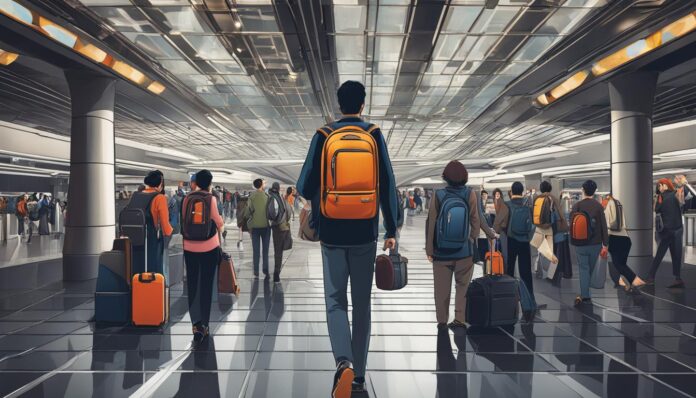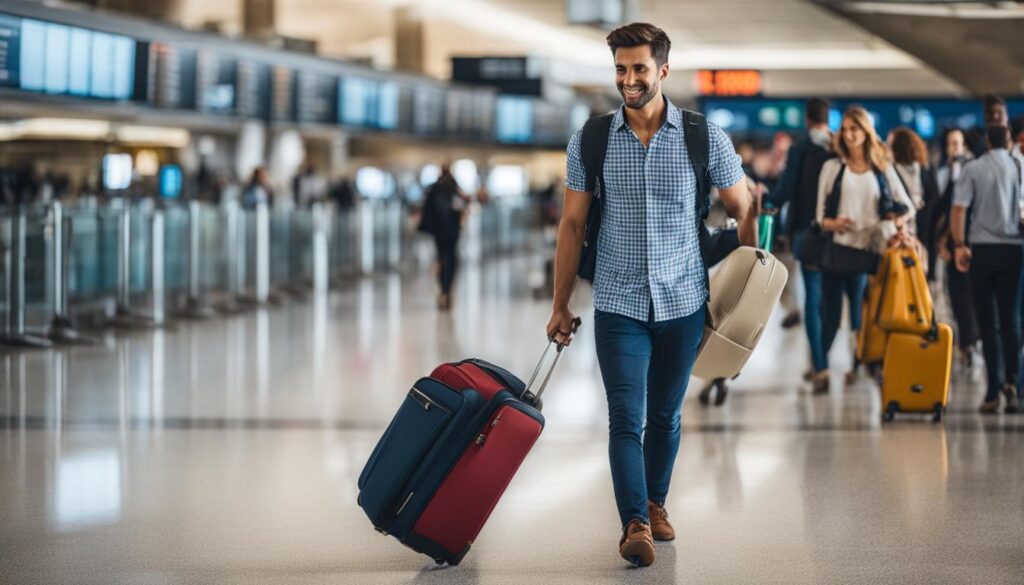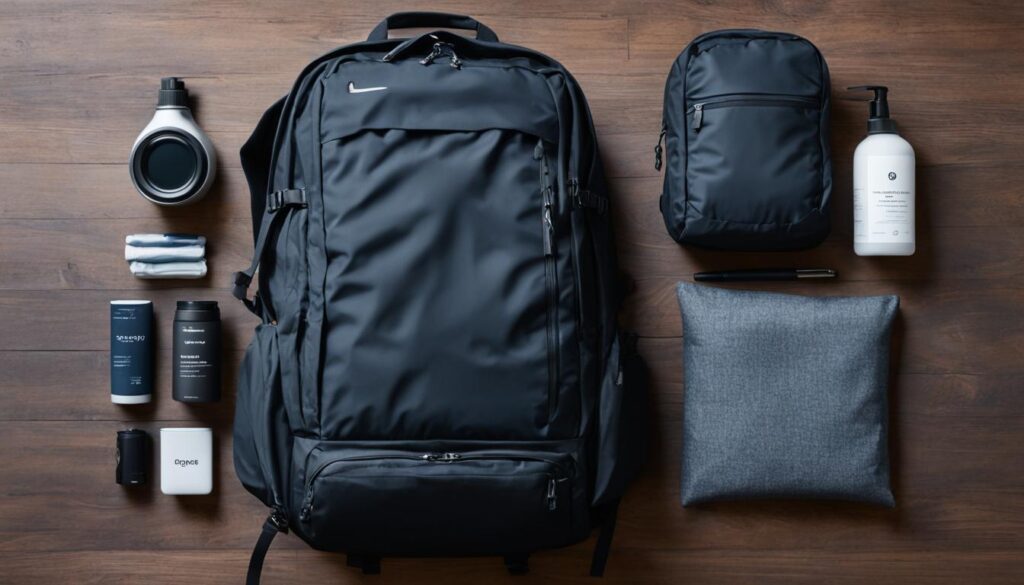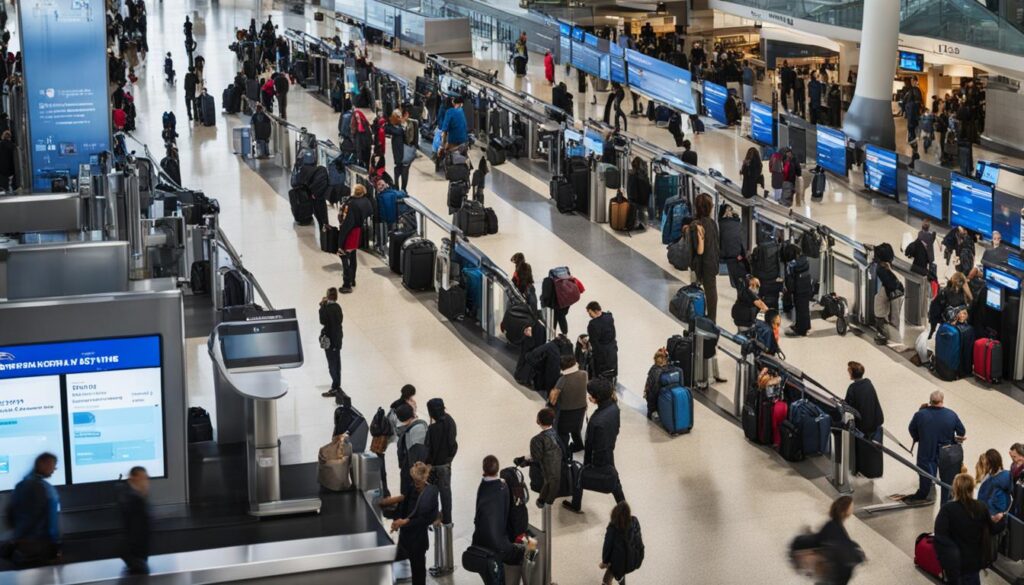Navigating crowded transportation hubs can be a daunting task, but with the right strategies and tips, you can make your travel smoother and less stressful. This article will provide you with the best tips for navigating crowded airports and train stations. From airport navigation tips to train station navigation hacks, we’ll cover how to navigate busy airports and train stations efficiently with expert tips for crowded transportation hubs.
Plan Ahead for a Stress-Free Journey
When navigating crowded airports and train stations, planning ahead can make all the difference in reducing stress and ensuring a smoother journey. Start by researching the layout of the transportation hub, identifying potential congestion points, and determining the most efficient routes to your gate or platform.
Utilize online resources for pre-departure planning, such as the transportation hub’s website or mobile app. Many offer interactive maps and real-time updates on flight or train schedules, as well as information on gate or platform changes.
Consider booking your travel outside of peak travel times to avoid the biggest crowds. If you must travel during peak times, give yourself extra time for check-in, security, and boarding.
Expert Tip: Printing out a physical copy of your boarding pass and having a backup plan in case of cancellations or delays can give you peace of mind and reduce stress.
Optimize Your Packing and Luggage
When navigating crowded airports and train stations, packing light and efficiently can make a significant difference in reducing stress and improving your overall travel experience. Here are some tricks for smooth travel in crowded airports and train stations by optimizing your packing and luggage:
| Tip | Description |
|---|---|
| Pack light | Choose versatile clothing items that can be mix-and-matched, and avoid overpacking to prevent unnecessary weight and bulk. |
| Use compact luggage | Invest in a lightweight suitcase or backpack with ample storage space that can fit in overhead bins or under seats, and avoid checking bags if possible. |
| Organize essential items | Place important documents, electronics, and liquids in a separate compartment or pouch for easy access during security checks and transfers. |
By following these tips, you can minimize the amount of time and effort spent on managing your luggage, and focus on navigating through busy transportation hubs efficiently.
Be Mindful of Peak Travel Times
Whether you’re travelling for business or pleasure, it’s essential to be aware of peak travel times at crowded transportation hubs to avoid unnecessary stress and delays. Understanding the busiest hours can help you plan your journey accordingly and navigate crowded airports and train stations smoothly.
Here are some expert tips for managing peak travel times:
- Avoid rush hours: Try to avoid traveling during peak periods, which often occur during weekdays and around holidays. Consider departing and arriving during off-peak hours to minimize crowds.
- Choose less crowded days: If possible, try to schedule your travel for less busy days of the week. Midweek flights and early morning or late night departures may be less crowded than weekend flights or daytime departures.
- Check real-time travel information: Check airport or train station websites, apps or social media channels for updates on wait times, flight/train delays, and any congestion points to help you determine the best time to travel.
By being mindful of peak travel times and planning your journey accordingly, you can reduce stress and navigate busy airports and train stations with ease.
Utilize Online Check-In and Mobile Apps
Navigating a busy airport or train station can be overwhelming, but utilizing online check-in and mobile apps can help simplify the process. Not only can you save time by checking in online, but you can also avoid long lines and reduce stress. Many airlines and train companies offer mobile apps that provide real-time updates and navigation assistance, including gate changes and delays.
Electronic boarding passes are widely accepted, making it easier to keep important travel documents together on your mobile device. Some airport and train station apps even offer features such as interactive maps and directions to help you navigate the transportation hub efficiently.
Streamline Security Procedures
When navigating crowded airports and train stations, security procedures can be one of the biggest hassles. Follow these airport navigation tips to make the process quicker and smoother:
- Prepare for security checks: Fill out any necessary forms ahead of time, and have your ID and boarding pass easily accessible. You may need to remove certain items from your luggage, such as liquids or electronics, so pack accordingly to avoid delays.
- Utilize TSA PreCheck and other expedited programs: Trusted traveler programs like TSA PreCheck can save you valuable time during security checks. Check with your airline or the TSA website to see if you are eligible and how to apply.
- Be aware of prohibited items: Before arriving at the airport or train station, familiarize yourself with the list of prohibited items. This can save you time and avoid the headache of having items confiscated and potentially missing your flight or train.
By utilizing these expert tips for navigating crowded transportation hubs, you can make the security process less stressful and arrive at your destination with ease.
Navigate Immigration and Customs Efficiently
International travel can be hassle-free with efficient navigation strategies for busy airports and train stations. When travelling abroad, clearing immigration and customs can be time-consuming and exhausting. However, with some preparation and a few smart navigation tricks, you can save time and energy during this crucial stage of your journey.
*Complete Necessary Forms Beforehand*
Before embarking on your journey, make sure to complete necessary forms beforehand. Check the websites of your destination countries and fill in the required information before starting your trip. You can also consider enrolling in trusted traveler programs such as Global Entry or SENTRI in the US, or Nexus in Canada to speed up the process of crossing borders.
*Understand Entry Requirements*
To navigate immigration and customs efficiently, it is important to understand entry requirements. Check the local visa regulations and bring all necessary documentation with you for a smooth entry process. Be mindful of any health or vaccination requirements or travel restrictions that may apply.
*Utilize Fast-Track and Priority Lanes*
Many airports and train stations offer fast-track or priority lanes for certain travelers, such as those with disability or mobility needs, families travelling with young children, or business class passengers. Make sure to research and identify these lanes before your arrival and utilize them to save time and effort.
You can save time and money by familiarizing yourself with the customs regulations of the countries you will visit.– Jessica Simpson
Make sure to organize your travel documents, such as passport, visa, and boarding pass, in an easily accessible and secure manner. Label your document holder with your contact information in case it gets misplaced. And don’t forget to keep your transportation ticket and related information close at hand.
| Navigating Immigration And Customs: Dos | Navigating Immigration And Customs: Don’ts |
|---|---|
|
|
*Don’t Forget Your Customs* Declaration
If you have items to declare or are carrying more than the allowed limit of goods, make sure to fill in a customs declaration to avoid penalties or delays. The declaration form will ask you to state your personal details, flight information, and the items you brought into the country. You can save time and money by familiarizing yourself with the customs regulations of the countries you will visit.
Navigate Busy Terminals and Platforms
Maneuvering through crowded terminals and platforms can be overwhelming, but with these tricks for smooth travel in crowded airports and train stations, you can reduce stress and arrive at your destination with ease.
Firstly, familiarize yourself with the layout of the terminal or platform before arriving. Check online maps or search for terminal information ahead of time to shorten your time navigating. Once you arrive, make your way to information boards for updates on gate changes, delays, or other announcements that could affect your travel plans.
Signage throughout the terminal or platform can provide helpful information about shortcuts or alternative entrances/exits, so be sure to keep an eye out for them. Consider downloading mobile apps that offer real-time updates on gate changes and other important information when traveling by plane or using public transportation.
If you are traveling with a lot of luggage, some airports and train stations offer porter services or baggage carts to help you navigate crowded areas. Additionally, consider packing light and only bringing essential items in a compact, easy-to-carry luggage to make your travel smoother.
Avoiding peak travel times whenever possible is also a great way to navigate crowded terminals and platforms. Choose less crowded days for travel if there is flexibility in your schedule. Finally, don’t be afraid to ask for assistance from airport or train station staff if you need help with navigating or carrying your luggage.
Overcome Language and Communication Barriers
When navigating crowded airports and train stations, language and communication barriers can add an extra level of stress. Here are some insider tips to help you overcome these challenges:
Learn Basic Phrases
Take some time before your trip to learn a few basic phrases in the local language. This can be especially helpful when communicating with airport or train station staff. Common phrases to learn include: “hello,” “goodbye,” “excuse me,” “please,” and “thank you.”
Use Translation Apps
Translation apps can help you communicate with locals and navigate your way through busy transportation hubs. One popular app is Google Translate, which can translate over 100 languages in real-time. Another option is iTranslate, which includes features like voice recognition and offline translation.
Seek Assistance from Staff
If you’re struggling to communicate in a foreign language, don’t be afraid to seek assistance from airport or train station staff. They may be able to help you find your way or communicate with others on your behalf. You can also look for information desks or help centers, which are typically staffed with multilingual employees.
Managing Crowds and Delays
Even with the best plans and preparations, the reality of crowded airports and train stations means that delays are bound to occur. To minimize stress and make the most of your travel time, it’s essential to have some strategies in place for managing crowds and dealing with unexpected holdups.
Find Quiet Areas
If you need some respite from the hustle and bustle of a crowded transportation hub, look for quiet areas where you can relax and recharge. Many airports and train stations have dedicated areas for meditation, prayer, or simply some peace and quiet. Alternatively, seek out less-busy corners of the terminal or platform where you can sit and wait comfortably.
Utilize Airport Lounges
One of the best ways to beat the crowds and enjoy some peace and quiet is by taking advantage of airport lounges. Lounges offer amenities like comfortable seating, refreshments, and even showers or nap rooms in some cases. If you’re a frequent flyer, consider joining an airline lounge program for access to exclusive lounges around the world.
Have Contingency Plans
When faced with a delayed or cancelled flight or train, having contingency plans in place can save you valuable time and stress. Research alternative routes and modes of transportation ahead of time, and consider purchasing travel insurance to cover unexpected expenses. Additionally, keep important phone numbers, emails, and documents handy in case of emergency.
| Hack | Description |
|---|---|
| Be proactive | Check for delayed or cancelled flights or trains before leaving for the airport or station. |
| Stay informed | Sign up for real-time travel updates to stay informed about changes or delays. |
| Book a longer layover | Give yourself ample time for connections and unexpected delays by scheduling a longer layover. |
| Be flexible | Consider adjusting your itinerary if it means avoiding peak travel times or congested transportation hubs. |
By implementing these hacks for stress-free travel in busy airports and train stations, you can navigate crowded transportation hubs with ease and minimize unnecessary stress and frustration during your journey.
Conclusion
When it comes to navigating crowded airports and train stations, the best way to minimize stress and ensure a smooth journey is to plan ahead, optimize your packing and luggage, and be mindful of peak travel times. Utilizing online check-in, mobile apps, and expedited security programs can also make a significant difference in efficiency and time-saving.
Remember to navigate immigration and customs efficiently, streamline security procedures, and overcome language and communication barriers. And if you do encounter crowds and delays, finding quiet areas and utilizing airport lounges can help make the experience less stressful.
Overall, by following these tips and strategies, you can master even the busiest transportation hubs with ease and enjoy a stress-free journey. Safe travels!

















































